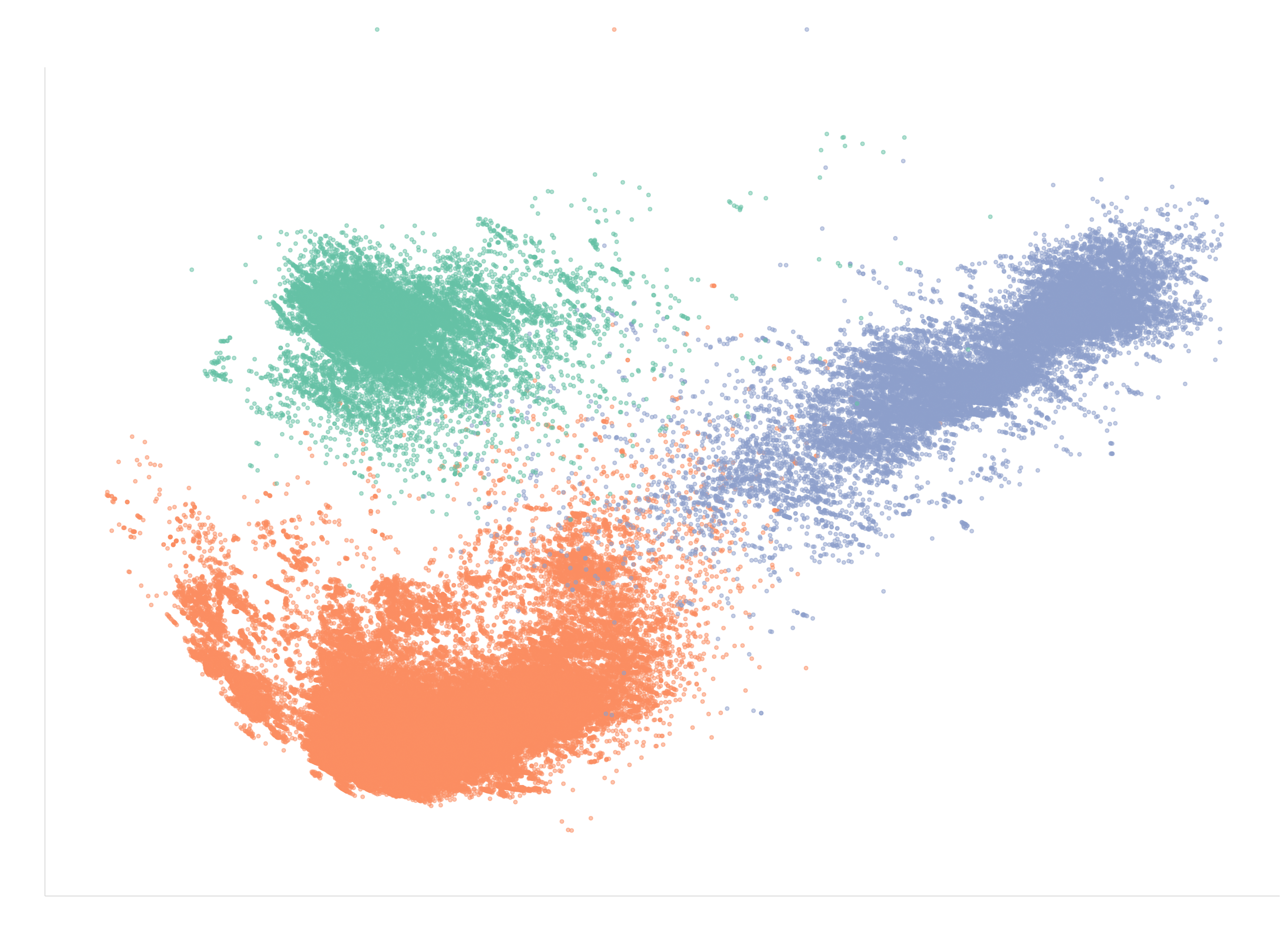Latent representations of forest characteristics
The main idea
Latent Forest embeddings are, essentially, vectors that represent abstract classes related to forestry concepts (e.g., forest types and tree species) in a continuous space, called latent space. The most important property of this space is its "meaningfulness" regarding the characteristics of the represented abstract objects. This meaningfulness can be expressed and tested in several ways, being the most relevant the "regularity" phenomenon, as well as the recoverability of information hidden in the latent space. Regularity means that, for instance, two represented forest types that are very similar will be located closely in the latent space, while two forests that are very different will be placed far away from each other. The idea of recoverability could mean that, for example, the latent vector of a tree species could be used for predicting its specific habitat requirements or usual community characteristics.
Development
Embeddings are developed using deep neural networks. The basic approach is to use a multilayer perceptron for transforming a simple numeric representation of the objects (input) into a numeric target (output). The latent space is then defined by an intermediate layer with dimensionality lower than the inputs. The quality of this representation depends not only on the input data but also on the "fake task", the supervised objective for which the model is optimized.
Types
Latent Forest representations can be classified depending on the scale (tree-, species- or forest-level), and architectural characteristics of the model (e.g., generative vs non-generative and variational vs non-variational). Additionally, the embeddings can be classified depending on the type of forest data used as input, which constrains the richness, in terms of information, of the latent space.
Embeddings cheatsheet
| TreeSp2Vec 1 | |
|---|---|
| Scale | tree, species |
| Tree size features | ✓ |
| Phytosociological features | ✓ |
| Habitat features | ✓ |
| Anatomophysiological features | - |
| Variational | - |
| Generative | - |
| Structure-aware | - |
| Dynamic | - |
| Download | ✓ (species) |
The embeddings

TreeSp2Vec 1
The basic tree species embeddings. It is based on a simple multilayer perceptron and does not consider forest structure nor dynamic data. It represents tree species in 16 dimensions basing on three input axes: tree size, phytosociology and habitat features.